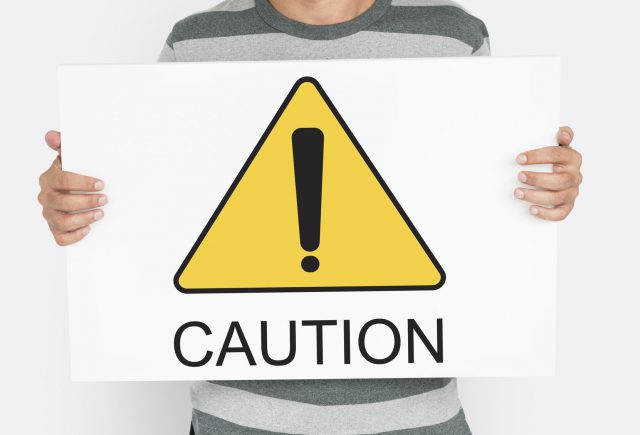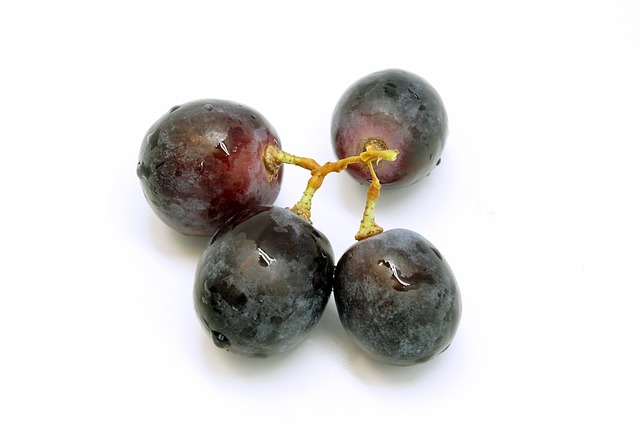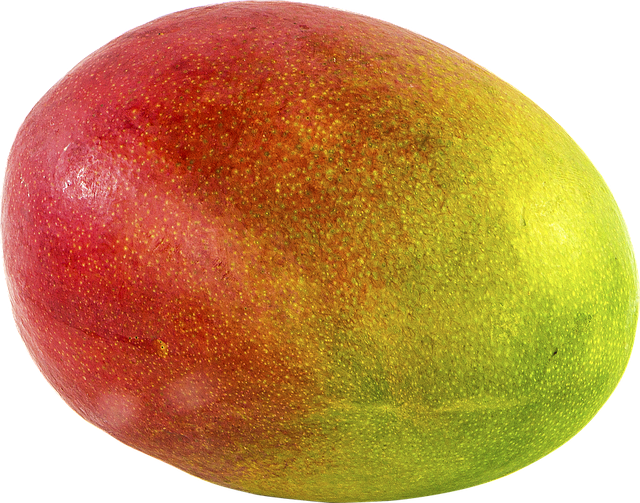The 10 most dangerous foods below include those that are commonly eaten, not rare and exotic dangerous foods such as African bullfrogs or blood clams.
These foods below pose real food poisoning, injury, and other risks to you and your loved ones, and are ranked in terms of popularity of the food plus the scope of the danger.
Please share this with others, as it could prevent unnecessary suffering and even save lives!
#1) Hot Dogs – Choking Hazard #1 and Cancer Risk

Americans will consume 7 billion hot dogs this year.
Whether they’re best consumed Chicago-style or New York-style has long been a subject of debate. But there are bigger concerns.
Because after a review of over 800 studies, highly processed meats including hot dogs have been shown to cause cancer.
Beyond their high amounts of sodium and saturated fat, how they’re processed can lead to the formation of cancer-causing compounds called polycyclic aromatic hydrocarbons (PAHs). The nitrites used to prevent bacterial bacterial growth and add color to hot dogs may also be a key cancer culprit.
Meanwhile, over 5000 people in the U.S. will die from choking this year. Food is a top cause of choking, and hot dogs in particular are a top danger for both adults and children.
For kids under 3, in fact, 17% of all cases of food-related choking are caused by hot dogs, making them the #1 food choking risk. Hard candy is #2 at 10%, grapes are #3 at 9%, and nuts are #4 at 8%.
“Every food poses a choking risk in young kids but the hot dog has just the right size and consistency to perfectly block the airway, it’s the perfect plug that doesn’t allow any air to get through,” according to Johns Hopkins Children’s pediatrician Nisha Kapadia, M.D.
If you enjoy the mystery meat known as hot dogs, it can be hard to give it up cold-turkey. At least limit your consumption to the occasional wiener.
The same goes for feeding it to kids. Make it an occasional treat at most, and be sure to cut it up into very small bites for little kids.
Sources:
Johns Hopkins Medicine
National Safety Council
Los Angeles Times
USA Today
#2) Potatoes – Toxic When Green or Fried, and High Glycemic
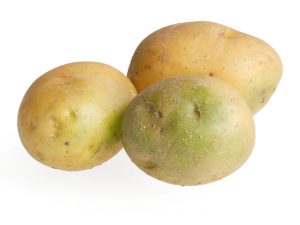
Potatoes are the #1 vegetable crop in the USA by far, because the average American eats 124 pounds of them each year. The Germans love them even more, and eat twice as many yearly.
Potatoes can be very healthy for most people when eaten properly, such as boiled or steamed. Potatoes are high in vitamins C and B6, potassium, magnesium, and antioxidants. If you eat the skin they’re a good source of fiber, too.
They become very dangerous foods, though, when you fry them. Yes, this unfortunately includes one of America’s favorite foods, French fries.
Those who eat fried potatoes twice-weekly or more double their risk of an early death versus those who avoid them. The primary problem is acrylamide, a chemical linked to cancer and other issues that is produced when potatoes are fried – or even baked or roasted at high temperatures.
Potatoes are no health food either when you drown them in butter, sour cream, or cheese, of course.
And if you have diabetes, are pre-diabetic, have blood sugar issues, or a family history of diabetes, it may be wise to eat potatoes in moderation or avoid them altogether. They have a high glycemic index, meaning they cause a sharp and fast increase in your blood sugar, which in turn spikes insulin in your body. Potatoes have been linked to the development of type 2 diabetes.
And everyone should avoid any part of a potato that is green. This includes greenish skin, and potato sprouts, eyes, leaves and any other green parts.
This green indicates a high concentration of glycoalkaloids such as solanine, which are poisonous to people. While it would likely take eating four or more pounds of green-ish potatoes to kill you, the toxins in smaller amounts can cause severe distress including nausea, vomiting, and diarrhea. (And the risks are higher for children and the elderly.)
When potatoes are left too long in the light they can develop the greenish skin, which is why it’s recommended you store potatoes in a cool dark place (never in the refrigerator). And potatoes left to sit too long can develop the green sprouts. Either cut out all green parts of a potato if you are going to use it, or discard it altogether.
If a potato ever tastes bitter, that’s another sign it may contain toxins and the spud is a dud.
Finally, yet another problem with potatoes is that those you buy from the store are amongst the 12 types of produce contaminated with the most pesticide residue.
Wash your potatoes thoroughly. Even better, choose organic potatoes, and wash them thoroughly too just in case.
Sources:
Idaho Potato Museum
LiveStrong.com
New York Times
Time Magazine
United States Department of Agriculture
#3) Sprouts – E. Coli and Salmonella Contamination
Sprouts from alfalfa, clover, radish, mung beans and other seeds are extremely nutritious. They’re excellent for healthy digestion, a great source of enzymes your body needs to protect you from disease, and can even help with weight loss.
But Mike Doyle, director for the Center for Food Safety at the University of Georgia, has been quoted as saying, “I consider sprouts to be among the most risky foods sold at retail.”
The problem is that sprouts need warm and humid conditions to grow — exactly the same conditions ideal for the growth of bacteria, including the E. coli, Salmonella, and Listeria that are so dangerous to people.
In the last three decades there have been dozens of reported outbreaks of foodborne illness associated with raw and lightly cooked sprouts. This includes the famous outbreak from bacteria-tainted sprouts that killed over 30 people and sickened over 3000 in Germany back in 2011.
Sprouts grown at home versus purchased from the store aren’t off the hook, either. Often small trace amounts of the offending bacteria are in the seeds, and even under sanitary conditions the bacteria can grow to a high volume during home sprouting.
Science is on the verge of a convenient device to detect harmful bacteria on your food, but until that time here’s the top tips for sprout safety:
- Children, the elderly, pregnant women, and those with weak immune systems should avoid eating raw sprouts of any kind.
- Cooking sprouts is highly recommended, because cooking kills harmful bacteria.
- Avoid foods with raw sprouts in restaurants. Ask that they not be included.
Sources:
CBS News
FoodSafety.gov
Huffington Post
MIT Technology Review
Organic Facts
#4) Bagels – Leading Cause of Severely Cut Fingers

Over 200 million Americans will eat about 5 billion bagels this year, the majority at home.

And though you can get them sliced for you, they tend to taste fresher when you cut them at home yourself. Therein lies the problem.
Bagels are notoriously tricky to slice. Thousands of people end up in the ER each year because of severely cut fingers from bagel slicing gone bad. In fact, because so many are seriously injured, it’s one of the top 5 dangers in American kitchens!
Because they’re still not teaching you bagel safety in school, YouDefense is here to help:
- The safest and fastest way to cut a bagel is to shout “Off with your head!” and use the top-rated Hoan Bagel Guillotine Slicer. The acrylic safety shields provide protection from the super-sharp blade.
- If you do use a knife, only use those with serrated edges (the edge that looks like a saw.) Use a sawing motion, so the teeth grind through the bagel. Never use a smooth-edged knife because they can easily slip.
- NEVER cut a bagel with a knife while holding it in your hand.
- NEVER try standing a bagel on its side to cut it with a knife. They’re round and slippery. They can easily roll or slide away, resulting in injuries.
- Place the bagel flat on an even and sturdy surface and carefully slice it with a serrated knife horizontally.
- NEVER try slicing a frozen bagel with a knife. This is the cause of half of all the serious bagel injuries.
Sources:
New Yorker Bagels
Statista
The Top 10 Threats to Your Life in 2018
Discover the 10 highest-probability dangers to your life, health, and sanity this year, and how to protect yourself.
No fear-mongering. No hype. Just the crucial facts.
The Annual U.S. Report from YouDefense.com. Yours Free Today:
#5) Avocados – Rising Number of Badly Cut Fingers and Wrists
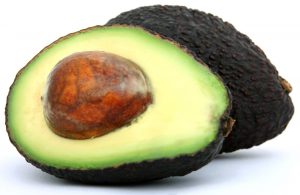
Because of the fast-rising popularity of this very healthy food – and widespread improper cutting techniques — avocados are giving bagels a run for their money in terms of sending people to the emergency room.
There’s even a term for the fingers, thumbs and wrists often sliced or stabbed all the way down to the tendons and bone – “avocado hand.”
And no one is immune, not even Hollywood royalty – Meryl Street had to undergo surgery several years back for avocado hand.
Here’s the safest way to cut an avocado:
- Use a well-sharpened medium-sized knife. Small knives like paring knives may not easily reach all the way to the seed and can increase your risks.
- NEVER hold an avocado in your hand to cut it.
- Place the avocado on its side on a firm, non-slippery surface such as a cutting board.
- Gently hold the fruit down with the fingers of one hand atop the avocado.
- Imagine an equator around the avocado, and slice all the way around that equator down to the seed, gently turning the avocado with your fingertips.
- NEVER try to remove the seed by poking at it or popping it out with a knife. Use a spoon instead to scoop it out.
If that’s too complicated, hold onto your hat. Because British grocery stores are already selling seedless avocados, and they’re coming to the US soon.
Sources:
National Public Radio
#6) Kidney Beans – Toxic When Improperly Cooked
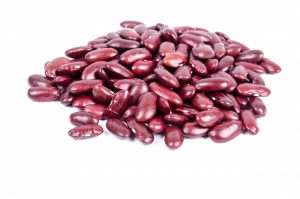
Kidney beans are exceptionally versatile and healthy. They’ve been shown to lower cholesterol fight heart disease and diabetes, control blood sugar, and help with weight loss.
Uncooked or undercooked, though, they’re also toxic. This includes the common red kidney beans, and also the white kidney beans better known as cannellini.
The offending toxin’s official name is phytohaemagglutnin – but you can just call it kidney bean lectin.
Eating this poison results in severe nausea and vomiting or worse, and eating just 4 or 5 improperly prepared kidney beans can prompt the symptoms.
First of all, never eat raw soaked kidney beans. Even if you’re using them in cold salads they need to properly cooked first.
And if they’re undercooked, they can be even more toxic than when they’re raw.
The most important key to safe kidney bean cooking is to make sure you boil them!
Canned kidney beans are already properly cooked and safe to eat right out of the can.
If you’re starting with dried kidney beans, though, follow these directions:
- Soak the kidney beans in water for at least 5 hours
- Pour the soaking water away, and rinse the kidney beans under running water
- Boil the kidney beans in fresh water for at least 10 minutes
Sources:
FoodReference.com
Tomatoes – Poisonous Leaves and Stems, High in Pesticides
Yes, even the much-adored tomato comes with some dangers.
The first concern is not the fruit itself, but the stems and leaves. They contain the same class of toxic chemicals called glycoalkaloids as the green parts of potatoes, though the glycoalkaloids in potatoes can be significantly more harmful.
Now, you would likely have to eat a lot of tomato leaves and stems to cause serious damage.
Do note, though, that the toxin is the plant’s natural way to keep bugs and other predators away, and insecticides are in fact derived from tomato leaves.
For people, ingesting even small amounts of tomato leaves and stems raw can cause serious discomfort. The risks increase for children, pregnant women, the elderly, and those with sensitive digestion or weak immune systems.
There are some who claim that cooking the leaves and stems makes them safe to eat. While it makes sense that cooking would eliminate some of the toxin, our stance is better safe than sorry when there are so many other healthy greens known to be safe that you can cook.
Another problem with tomatoes is that they’re a relatively common source of bacterial contamination, particularly salmonella. Most of the cases of bacterial contamination occur in tomatoes eaten in restaurants, so only eat tomatoes at restaurants you trust.
Finally, tomatoes are also amongst the 12 types of produce contaminated with the most residue from pesticide spraying.
Be sure to wash your store-bought tomatoes thoroughly. Better yet, choose organic tomatoes, which many claim taste much better, too, but wash them thoroughly as well.
“>Sources:
Gardening Know-How
Government of Canada
Environmental Working Group
#8) Rhubarb – Toxic Leaves
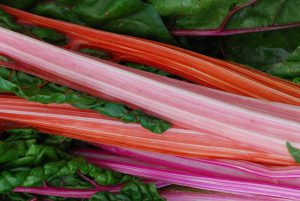
The red stalks of rhubarb add a delicious tartness to foods, especially desserts like the ever-popular strawberry rhubarb pie. And p.s., it’s also an effective natural laxative should you ever get constipated.
Never, however, eat the leaves of the rhubarb plant.
They contain poisonous substances including oxalic acid, which can be dangerous to downright deadly depending on the amount consumed.
Effects include difficulty breathing, weakness, burning in the mouth, nausea, abdominal pain, convulsions, coma, and death.
Unfortunately, during World War I many soldiers suffered and died from eating rhubarb leaves, because they were mistakenly recommended as a substitute for other vegetables in short supply.
If you grow your own rhubarb or know others who do, teach children to avoid the plant, and keep pets away from them. When you pick it, clip the leaves off immediately and discard them. And wash the stalks thoroughly before cooking.
Sources:
U.S. National Library of Medicine
#9) Peach and Apricot Pits – Cyanide Risk
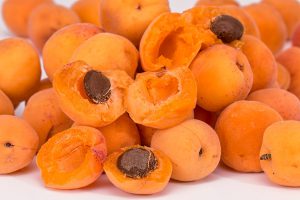 A number of fruits have seeds that contain amygdalin, which degrades to the poisonous hydrogen cyanide inside your body.
A number of fruits have seeds that contain amygdalin, which degrades to the poisonous hydrogen cyanide inside your body.
Cyanide toxicity can cause stomach cramps, nausea, vomiting, headaches, heart attacks, coma and even death.
This common fruits whose seeds contain this toxin include apples, pears, cherries, nectarines, apricots, and peaches.
However, the risks with most of these seeds are extremely low.
Eating a few apple or pear seeds should pose no issues, for example, because the amount of amygdalin in them is relatively low so your body can decompose the cyanide, plus the seeds are protected by a hard shell which means they’ll typically pass right through your body.
Peach and apricot pits, however, are of particular concern, due to the volume and type of amygdalin in them. 13 to 15 of these seeds equal the deadly range of cyanide poisoning for adults!
The good news is that people don’t typically consume apricot and peach pits because of their size and hard consistency.
However, it’s a good idea to teach kids to never crack into apricot and peach pits – or cherry and nectarine pits for that matter — and to never consume what’s inside.
It’s also a good idea for you to cut into apricots and peaches and remove the pit before eating, as by biting directly into the fruit you may unintentionally break the pit with your teeth, especially if it already has cracked or weak spots.
Sources:
New York Times
Snopes
#10) Cashews – Danger if Raw
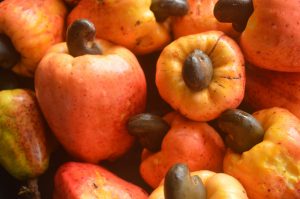
Cashews are great sources of antioxidants, vitamin E, K, B6, and minerals like magnesium, zinc, phosphorous, and selenium.
And any of the cashews you can buy in stores are typically very safe to eat.
If you’re out in nature or on farms where cashews are grown, though, NEVER eat cashews raw.
Cashews are a member of the Anacardiaceae family, which also includes poison ivy. Like poison ivy, cashew plants contain urushiol, a natural chemical that’s a strong irritant and can kill you if ingested in high amounts.
Urushiol is found in a layer of oil between the cashew shell and the seed you eat. That’s why you never see cashews in their shells in stores.
They must be shelled carefully, and then roasted at high temperatures to eliminate the oil.
And what about cashews advertised as “raw” in stores? They’re actually steamed or boiled at high temperatures to remove the natural toxin.
Sources:
Indiana Public Media
University of Illinois
The Top 10 Threats to Your Life in 2018
Discover the 10 highest-probability dangers to your life, health, and sanity this year, and how to protect yourself.
No fear-mongering. No hype. Just the crucial facts.
The Annual U.S. Report from YouDefense.com. Yours Free Today:
What other common foods pose dangers others should be aware of? Please share your comments below!
And please SHARE this article on the 10 most dangerous foods with others, because it could help them avoid suffering or worse.

